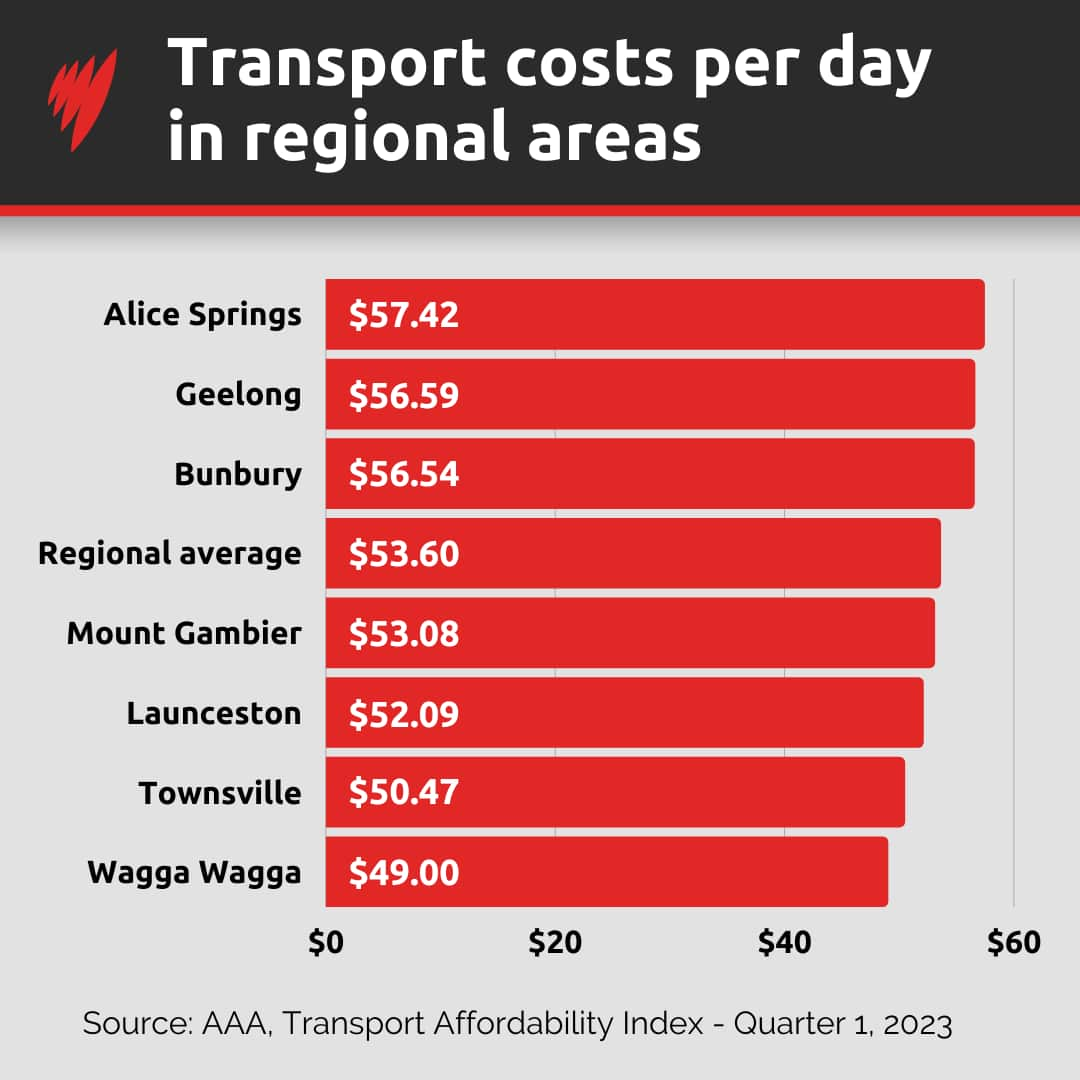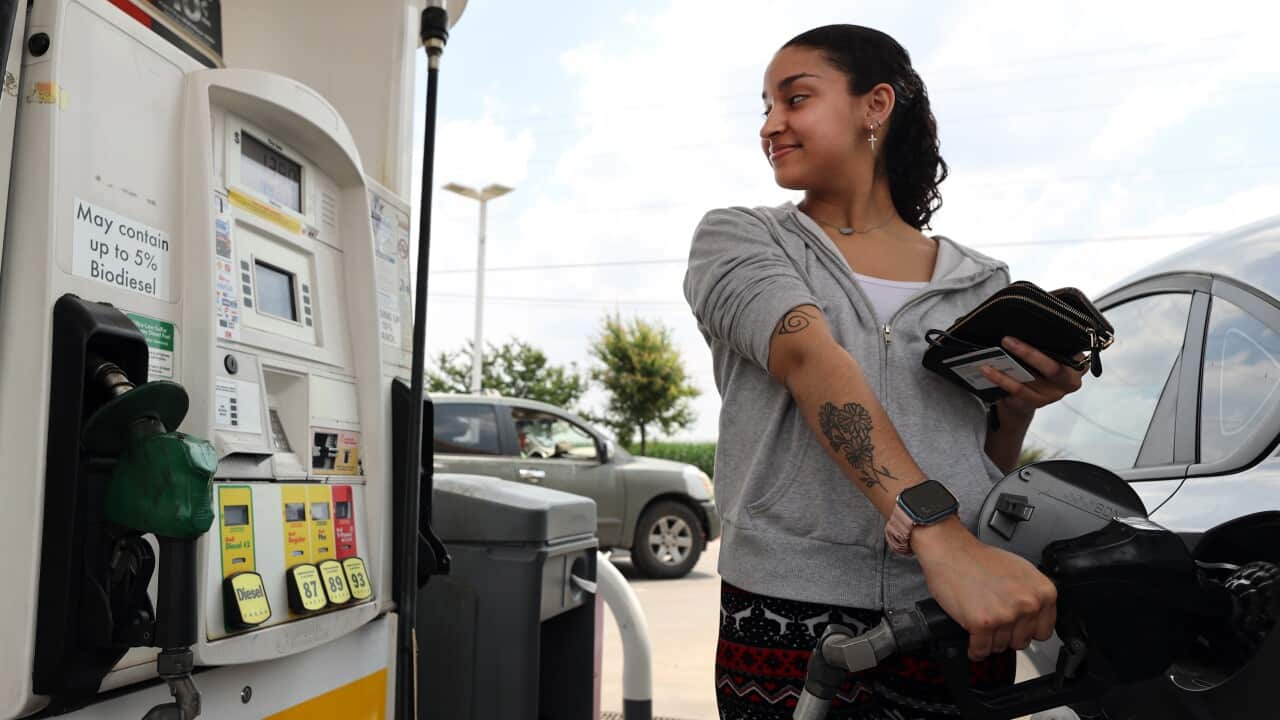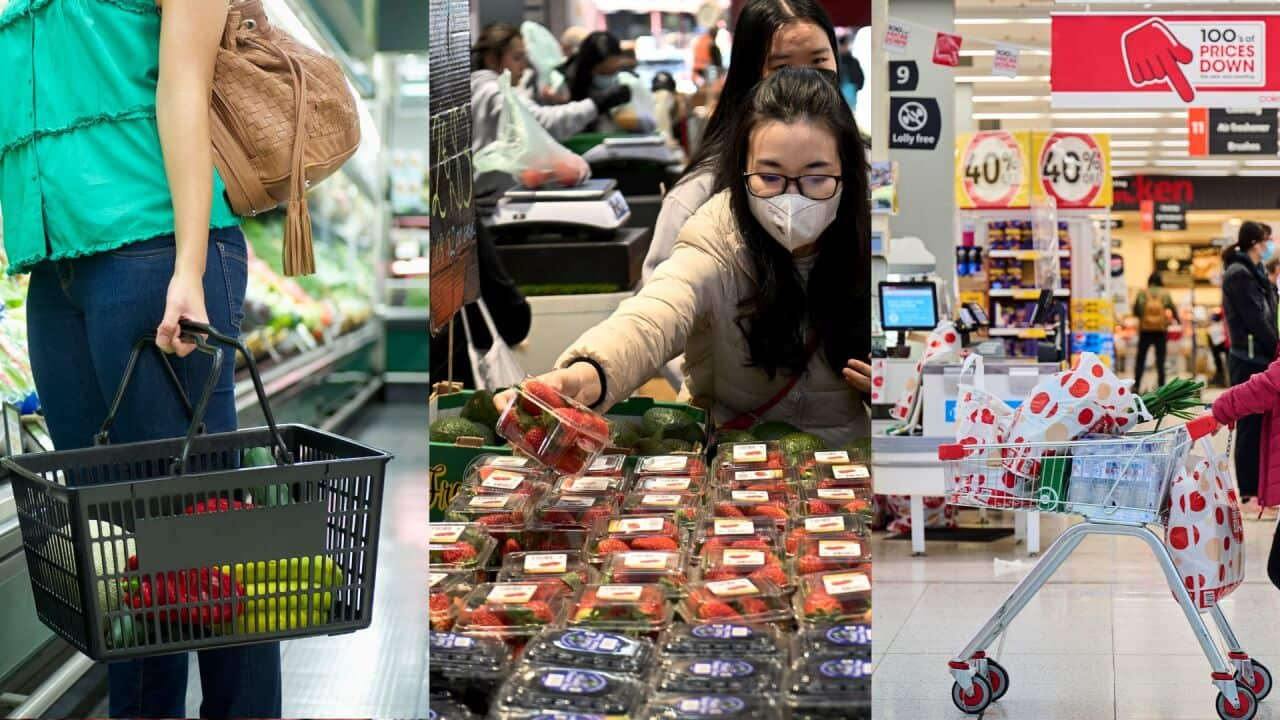Key Points
- The average family spends $59 a day on transport, new analysis shows.
- The greatest price jumps have been in car loans, insurance and maintenance.
- Transport costs rose 7.4 per cent in the March quarter, far outpacing general inflation over the same period.
Australian families are spending on average $59 a day on transport as new research shows the cost of getting around is taking off.
The Australian Automobile Association (AAA)'s latest transport affordability index shows transport costs have risen faster than inflation, with the greatest price jumps in car loans, insurance and maintenance.
Motorists did get small relief in some areas, including modest price falls in petrol and relief on tolls and registration costs in some states and territories.
Other costs measured included servicing and tyres, public transport and roadside assistance.
AAA’s analysis showed transport costs for an average Australian family had increased by almost 7.4 per cent in the March quarter, much higher than the consumer price index increase of 1.4 per cent over the same period.
The analysis was based on the costs of a hypothetical couple with two children, who have two cars and are both employed.
How much does transport cost in your city?
The average cost for capital cities was $63.77 a day, while those in regional areas were paying on average $53.60 a day.
At current rates, this would come out to an average of $23,213 per year in capital cities and $19,510 per year in regional areas.

Source: SBS News
Brisbane saw the largest increase, however, with costs going up on average $4.90 a day.
The cheapest capital city was Hobart at $55.80 a day, which was cheaper than the most expensive regional area, Alice Springs, where transport comes to $57.42 a day.

Source: SBS News
The national average sits at 15.8 per cent while Canberra residents spend the smallest proportion of income on transport at 14.4 per cent
Why are transport costs increasing?
The rise was largely driven by the impact of rising car prices and higher interest rates on car loan payments.
In the March quarter, the typical Australian household’s car loan payments increased to $26.19 a day on average.

Source: SBS News
Fuel was the next biggest cost, coming in at 23.1 per cent or $13.65 a day, though that had gone down since the last quarter.
Costs for servicing and tyres also rose across the country.
AAA managing director Michael Bradley said: “The cumulative effect of continually rising transport costs is a heavy burden at a time when Australians are feeling cost of living pressures across the board.
“Transport is a significant and unavoidable expense for households and is one of the key drivers of inflation. Governments at all levels must consider these cost pressures when formulating policy.”
How can I save on transport costs?
Nearly all of the highest transport costs pertained to motorists.
In most cities, public transport fares are lower during off-peak hours.
Financial planning expert at Finder Sarah Megginson told SBS News it's worth considering other transport options like bicycles or motorbikes.
"If you can convert from four wheels to two, that's going to save you a lot of money. Finder data shows motorbike riders reduce their fuel costs by about 75 per cent," she said.
"Wherever you can be a bit mindful about a plan to walk or ride your bike or just even carpool if you can.
"These options that can help reduce your environmental impact and also save you a bit of money as well."
But for commuters whose only option is a car, particularly in regional areas, there are steps you can take to reduce transport costs.
Ms Megginson said drivers should be savvy and look for the best fuel prices, which are shown in different apps in different states.
"We know that petrol prices tend to go up as we head into the weekend, the cheapest day to get petrol is a Tuesday.
"By Friday, it's usually its most expensive, because of supply and demand thing, where people are often gearing up to go and do some activities over the weekends and prices go up," she said.
Ms Megginson also suggested shopping around for better deals on car insurance and loan deals and avoiding toll roads.
With additional reporting by the Australian Associated Press.












